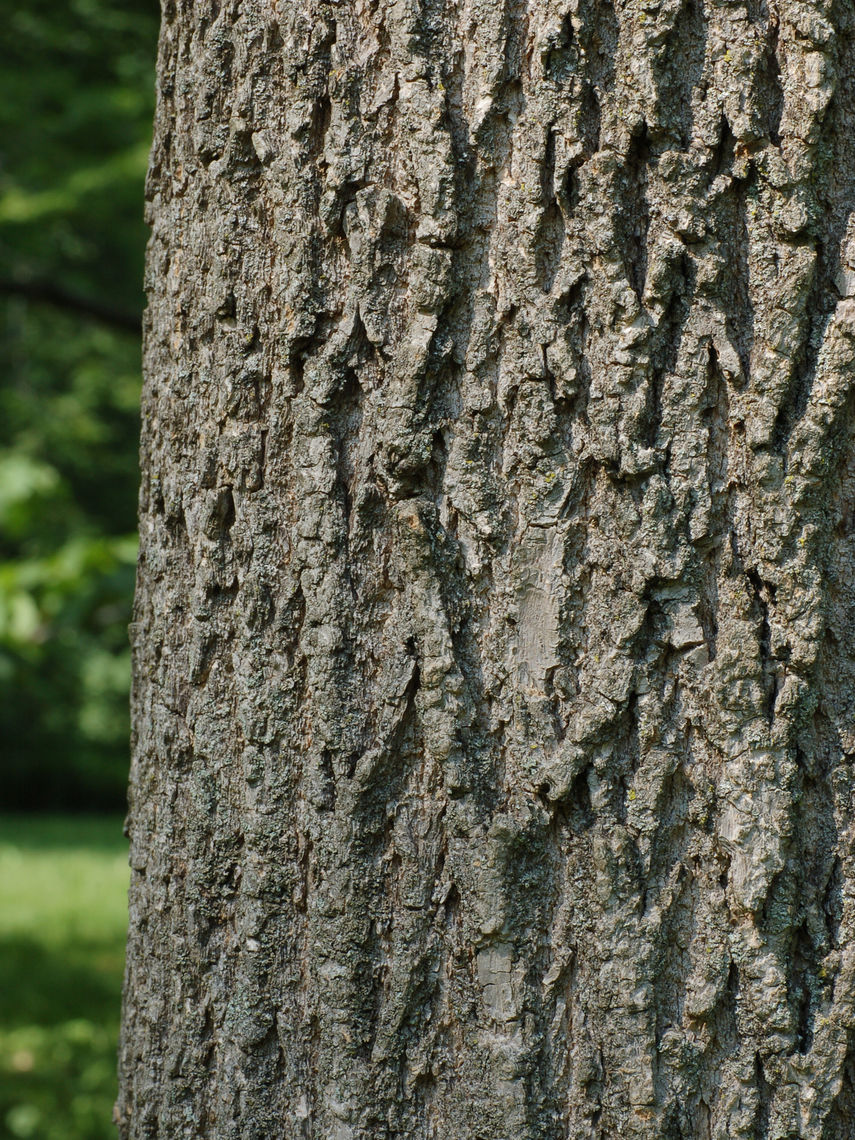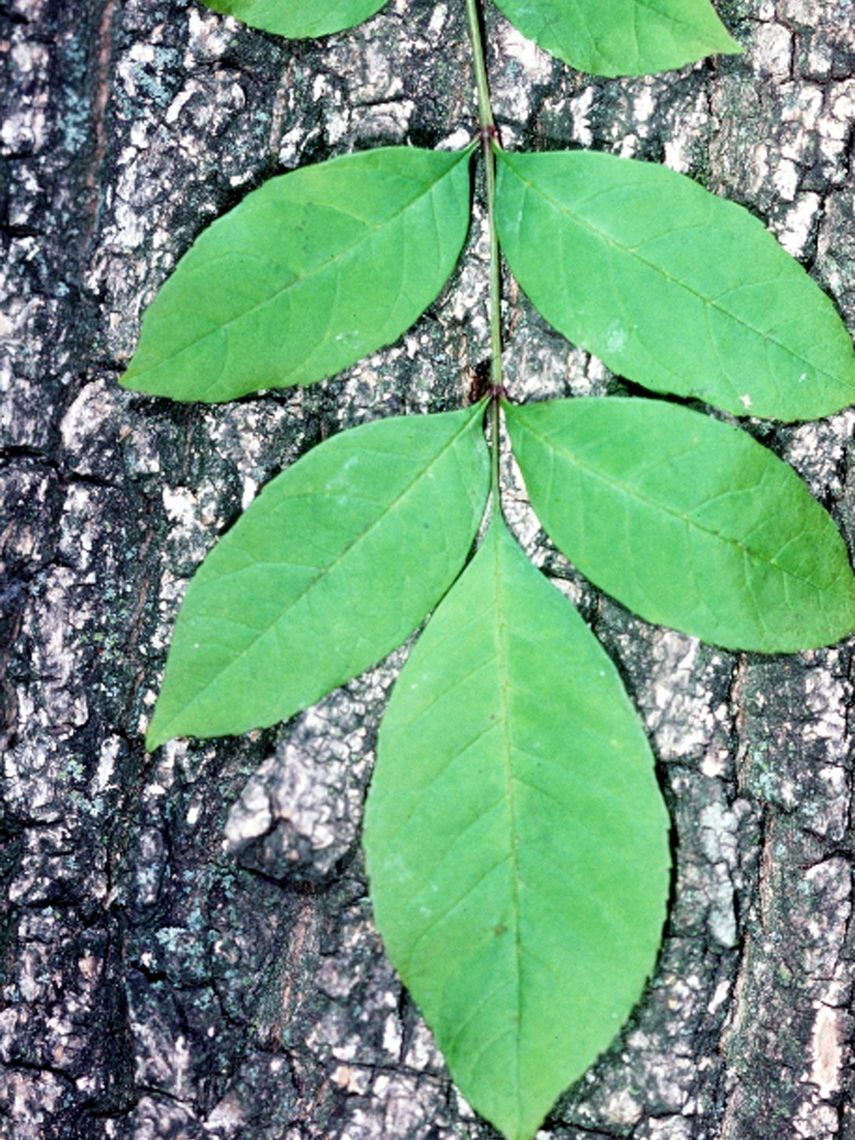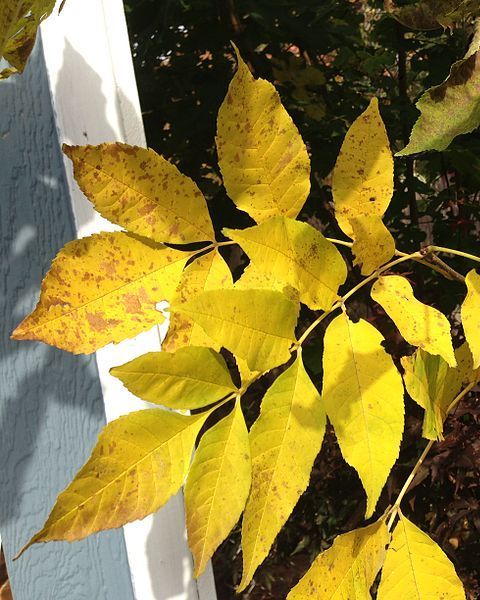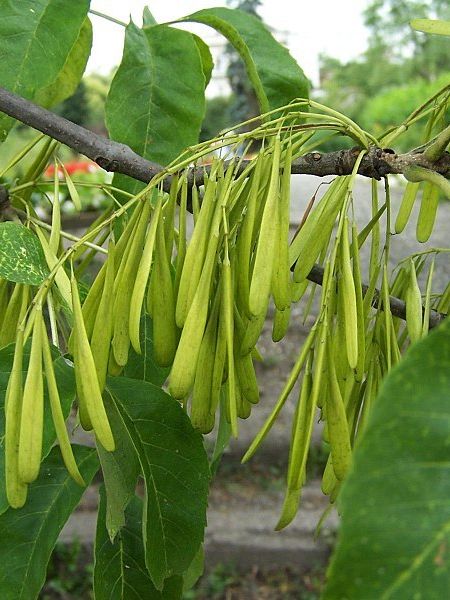Ash-Green (Fraxinus pennsylvanica)
The green ash has a vast growing range, extending from northern Canada to the southern United States. The green ash is similar to the white ash except that 1) its flowers appear after its leaves 2) the undersides of leaflets are green and not white and 3) the leaflets are toothed from the midleaf to the tip. Like the white ash, green ash wood is used to make a variety of products such as tool handles, oars, garden furniture, and sports equipment. This tree attracts insect pollinators and birds.
Family: Oleaceae (Olive)
Characteristics: The leaves are odd compound pinnate, with 5-9 leaflets which are each 2-4 inches long, ovate, slightly toothed towards the top, and medium to dark green. In the fall, leaves turn yellow. Clusters of petalless purple flowers appear after leaves. Fertilized female flowers produce samaras (paired wing seeds). When young, this tree has an irregularly pyramidal shape, but becomes oval to rounded with age. This tree is upright-spreading, though smaller branches will point downward and up at the tips. Grows 50-60 feet high and has variable spread.
Foliage: Deciduous (leaves lost seasonally)
Geographic Origin: North America (native)
Cultivation Notes: Requires medium maintenance. Does best in full sun. Prefers moist and well-drained soils. This is a highly adaptable tree, and is tolerant to varying conditions and soils. It is susceptible to emerald ash borer, though, so it is not permissibly sold in all states.
Number on Campus: 19
Sources: Dirr, Morton Arboretum, Missouri Botanical Garden




